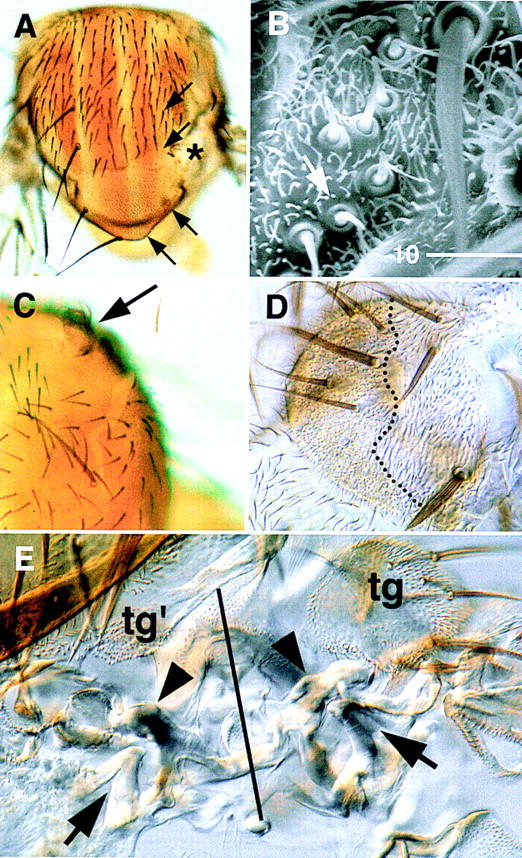Figure 1.

Phenotypes associated with Df(3L)iroDFM3 cell clones. (A) Notum with a malformation caused by mwh Df(3L)iroDFM3 cells (*). In the Df(3L)iroDFM3/+ territory, the dorsocentral and scutellar macrochaetae (arrows) are absent, which suggests an interference of the mutant clone with the patterning of the wild-type tissue. This nonautonomous effect was observed in 72 of 84 clones examined. (B) Ectopic group of sensilla trichoidea (one of them arrowed), similar to those of the tegula (tg in E), within mwh Df(3L)iroDFM3 territory. (C) Ectopic tegula structure (arrowed) arising on the anterior notum. (D) Same tegula structure shown after mounting the cuticle and at higher magnification. Only the tissue to the left of the dotted line is mwh Df(3L)iroDFM3. (E) Cuticle of a malformation similar to that in A. The solid line runs along the approximate axis of symmetry that separates wild type (right) from duplicated, ectopic hinge structures (left). (tg, tg′) Tegula and tegula-like cuticle with ectopic sensilla trichoidea. (Arrowheads) Wild-type and ectopic first axillary sclerites; (arrows) extant and ectopic second axillary sclerites.
